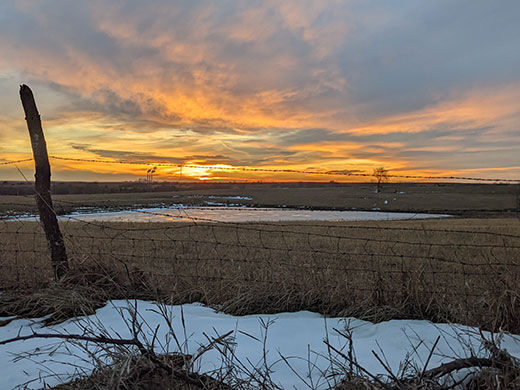“Winter conditions in Kansas can change rapidly,” said Chip Redmond, a meteorologist and manager of the Kansas Mesonet, a network of weather monitoring stations that has its headquarters at Kansas State University.
In Kansas, he said, “we can have a cold front come through that drops temperatures 50 degrees (Fahrenheit) in just a couple hours. Or we can go from clear skies to heavy snow very quickly.”
While Kansans can’t do anything about the weather, Redmond says they can prepare themselves to withstand brutal conditions—and keep themselves safe.
Cold temperatures
“The first thing that comes to my mind for winter weather safety is the cold, which brings different dangers—just as heat does in the summer,” Redmond said.
“Our bodies just aren’t prepared to take cold for long periods of time. The cold can quickly have negative effects, especially when we factor in wind chill.”
Redmond urges people to dress in layers and wear a stocking cap and mittens anytime they must face outdoor cold. He said frostbite or hypothermia happen very quickly.
“It can be less than even a few minutes, when you get cold and add wind,” Redmond said. “That’s why we look at things like closing schools once temperatures drop below zero or negative 10 with the wind chill. Those conditions produce a much higher risk, so we have to take more proactive steps and try to avoid outdoor activity as much as possible.”
Stocking caps help to keep heat from releasing through the head and “keeps the overall ambient temperature of your body warmer,” according to Redmond. Mittens are preferred over gloves because it maintains warmth by keeping the fingers closely together.
Travel safety
The State of Kansas regularly updates road conditions on the website, https://kandrive.org. Redmond encourages those planning travel to check the forecast along the path they will drive, including road conditions.
Redmond also suggests keeping an emergency kit in a car in case the vehicle gets stalled while traveling. In addition to warm clothing, he suggests such items as a snow brush and ice scraper; jumper cables or jumpstarter; blankets; cell phone charger; snack foods; water or other liquid such as electrolyte drinks; flashlight; sand in a small container and chains or other items to help in pulling a vehicle out of a ditch.
“Some people have tire chains; that may be a bit extravagant,” Redmond said. “If you need tire chains in Kansas, you probably shouldn’t be out on the road to begin with. But sand is useful to help you get out of an area where you don’t have much traction.”
A car’s tires may need some extra air in the winter because they shrink when they get cold, Redmond said. “If you have underinflated tires,” he said, “you’re not going to optimize the grip of that rubber, so you’re going to slip and slide a lot more.”



